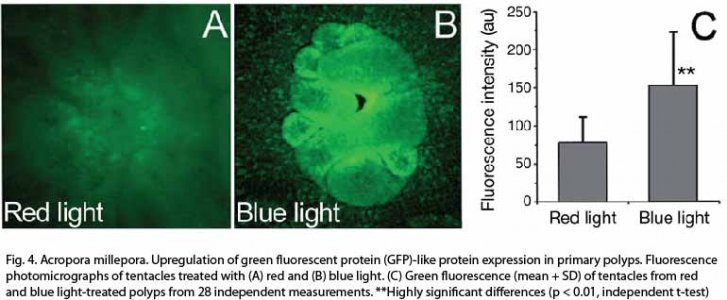ReefUrchin
New member
First a replay to your post 2311. I'm sure Benanimal misunderstood my post which gave rise to his response. It is history now.
I do not often need a translator to read English (not even to read Americans) but I need a bunch to write
First - You have probably already realized that not everyone here agrees with me. And that's lucky - for in that case, I probably wrong
What I'm saying: you need to evaluate by yourself and see if it makes sense.
1. I think that 20 watt with lenses will be enough for 22" and at least up to 25 - 26" It is also in the wavelengths where it is difficult to measure the effect of light (PAR and Lumen are not useful here). In the case of 420 nm, the question is easy because I have not seen any chip stronger than 20 watts of these wavelengths.
Personally, I think that 445 nm is most important - absorbance peak of chlorophyll C is around this wavelength. Maybe 2 pcs of 420/430 to 3 pcs 445 to 3 pcs 455 nm. I think also that you during "growth period" should run the because you get the blue wavelengths over 460 with the white chip’s..
2. I have tested 10 - 20 000 K from AC/RC - around 3 different batches. My impression was that 20 000 K gave a yellowier light than both the 16 000 and 14 000 K did. Then I looked at the light from the side and in the air. Not in the tank. My tank is based on biological principles, but I use ozone regularly so I have no yellow substances (humus) in the water.
I think that the best thing you can do is to bring home a 20 000K chip and compare for yourself if it looks good.
I have no experiences of any discoeffect in my set ups with one exeption. I tested a special rigg with a strong red “center” light over my aquarium. In this case – the small waves at my surface create a reddish skimmer in the water. With mixes of blue and white’s I never have seen this.
Sincerely Lasse
Thank you for the replay, but, now, hmmmmmmmm.........................
What also has me in a question is you say white light will give shades of blue. If we need such close but separate color chips, like 420, 430, 445 etc, how is white 20k light giving blue 460? This is one of the things bean was squawking about, not much spread. If it is there, that is great!
I think what needs to be done is to take a TOM, a really GOOD one, and put a spectrometer (or whatever it is called) in the tank and see what kind of spectrum the lights put out and, how much, to get the corals that are in that tank looking like they do. Then we take/make chips of various small divided colors and frequency's, divide that into separate tanks per color and cook (use word loosely) the corals. We will then see what grows what with no more guessing. Okay, well, at least a lot less guessing. We know somewhat the spectrum's that grow, but apparently not how much intensity of each we need, and, what others can be beneficial. If we use a good known example, I would think it will make it that much more easier to figure out?
Then again, maybe LEDs having such a narrow spectrum will be an Achilles heal and we will just have to wait for plasma to come to town? can we really fit 10nm times(x) 100 divisions of spectral color (just a guess) times(x) 100 LEDs? How big would a 10,000 LED chip be anyways?
Last edited:

